ESTP | MBTI Personality Type
Information about the MBTI personality type ESTP. Conscious cognitive functions, shadow cognitive functions, brain research, similar types, sex and population ratio and ESTP memes, videos and more.
Table of Contents
Known As
The Entrepreneur
The Promoter
1 Cognitive Functions
Conscious
Unconscious
Opposing: Si
Critic: Te
Trickster: Fi
Devil: Ne
What are the cognitive functions for ESTP and what do they mean?
The Myers-Briggs Type Indicator (MBTI) is a widely used personality assessment tool basing it’s conscious cognitive functions on Carl Jung's theories of psychological types. The original test was developed by Katharine Cook Briggs and her daughter Isabel Briggs Myers during the mid-20th century.
The MBTI framework is built upon four pairs of dichotomies, resulting in 16 possible personality types. Extraversion (E) vs. Introversion (I), Sensing (S) vs. iNtuition (N), Thinking (T) vs. Feeling (F), and Judging (J) vs. Perceiving (P).
Later on, other psychologists and researchers have added to the original Carl Jung framework alongside Katharine Cook Briggs and Isabel Briggs Myers, such as the psychologist John Beebe and author Linda Berens. Beebe and Berens have developed what is known as the shadow cognitive functions which are the parts of one’s personality which often arise under stress or during times of personal growth.
For pages discussing the scientific validity of MBTI, it’s comparison to the big 5 and other psychology tests, checkout this page: About.
2 Type Group
Explorers
The Explorers group is made up of Extroverted Sensing dominant or auxiliary users.
They are ESTP, ISTP, ESFP and ISFP.
This is a group of people who want to be interacting with the physical world.
For more information about the Explorers, checkout their article:
3 Similar types
Se Dominant: ESTP vs ESFP
Ti Auxiliary: ESTP vs ENTP
The 16 Personalities and their Common Mistypes by Love Who
The Definitive Video: Ne vs. Se (Extroverted Intuition vs. Extroverted Sensing) by Type Cast Heroes
4 Statistics
ESTP is 4.9% of the population with a sex ratio of Male: 70% and Female: 30%.
In the overall population, ESTP is 7.1% of men and 3% of women.
5 Brain Research
An ESTP’s brain, as researched in Dario Nardi’s university research lab, shows:
A full breakdown of the regions can be seen here:
6 Similar but different
ISTJ: Si-Te-Fi-Ne
ESTP likes what ISTJ likes in the same amounts but for different reasons.
(Se-Ti-Fe-Ni vs Si-Te-Fi-Ne).
INFJ: Ni-Fe-Ti-Se
ESTP appreciates INFJ for wanting to do what they naturally want to avoid doing.
(3rd-4th tier weaknesses Se-Ti-Fe-Ni vs Ni-Fe-Ti-Se).
ENFP: Ne-Fi-Te-Si
ESTP appreciates ENFP for their skills being the total polar opposite to theirs and vice versa.
(7th-8th tier weaknesses Se-Ti-Fe-Ni-Si-Te-Fi-Ne vs Ne-Fi-Te-Si-Ni-Fe-Ti-Se).
7 Enneagram
Type 3, Type 7, Type 8
8 Memes
Group
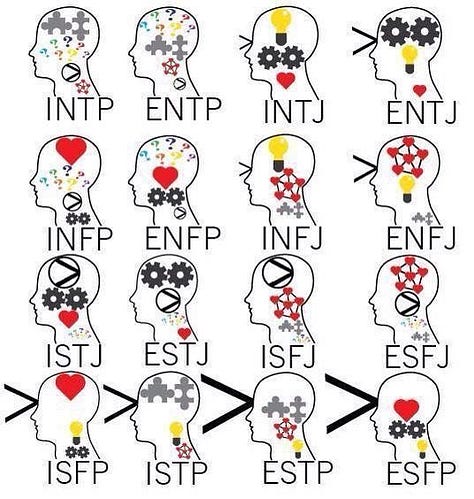

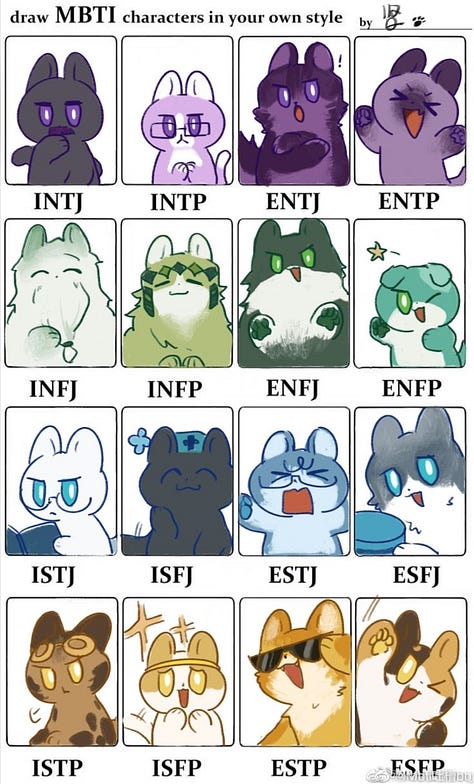

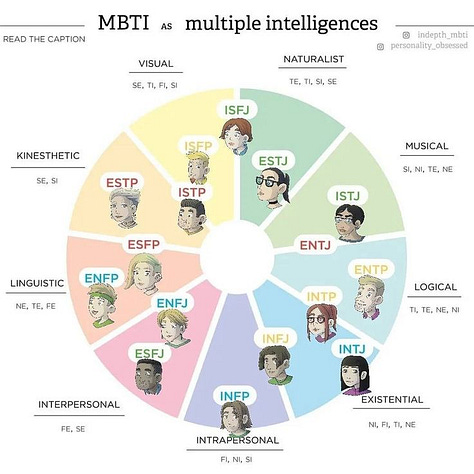
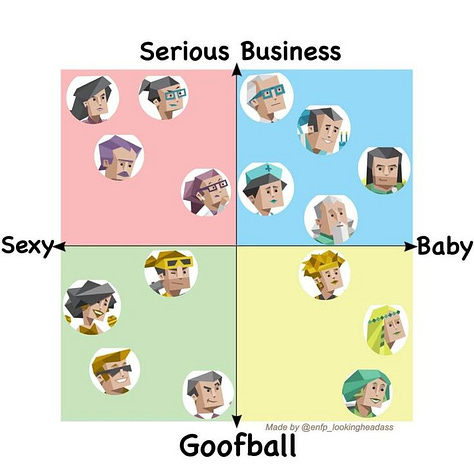
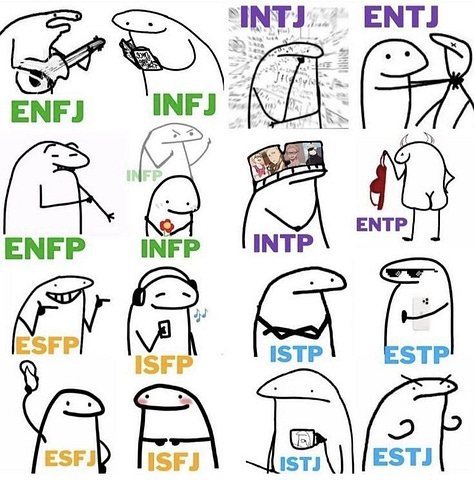
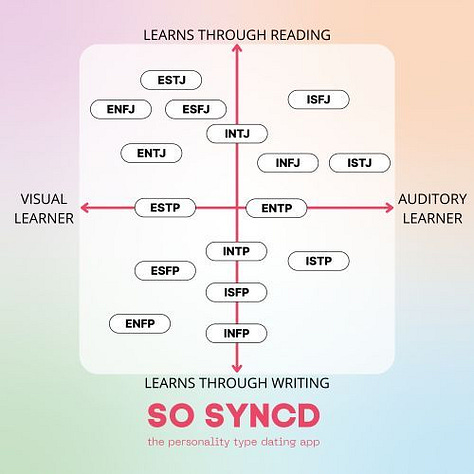

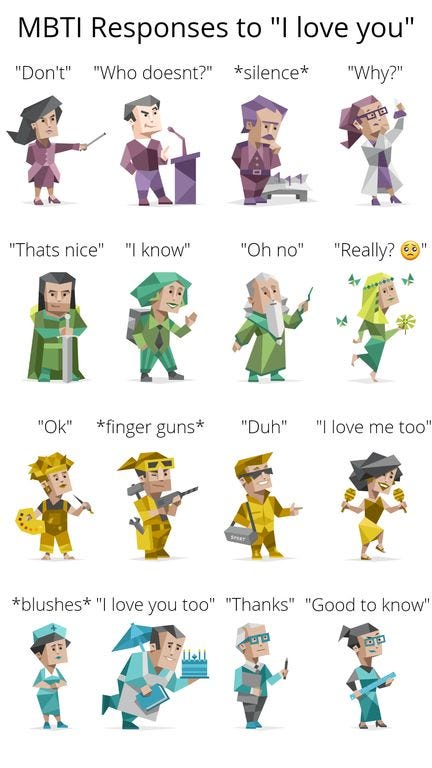
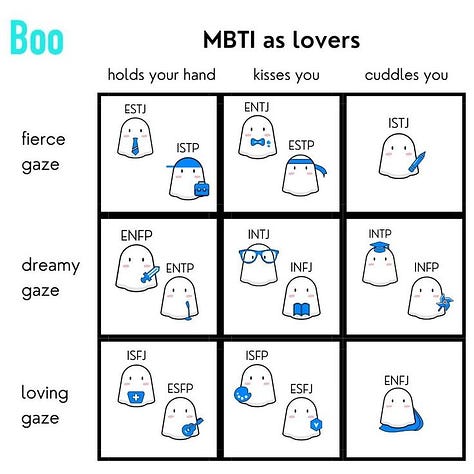

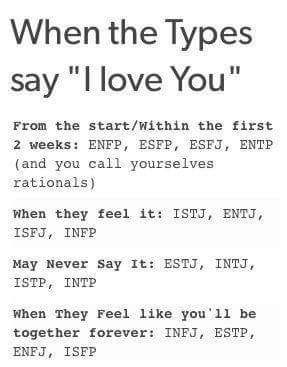
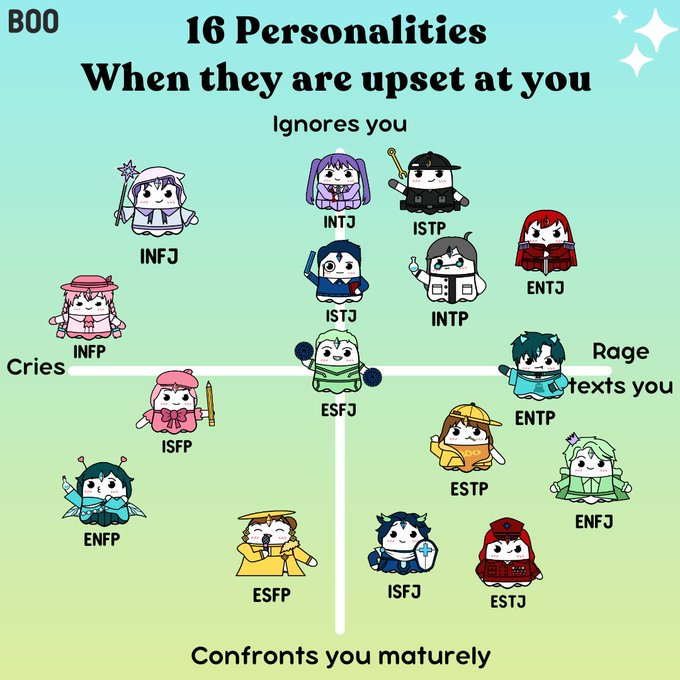
Individual
Romance
9 Videos
Inside The Mind Of The ESTP (+ playlist) by Love Who
Primary (Hero): Se
Auxiliary (Parent): Ti
16 Types Cognitive Function Axes: Ti & Fe | (INTP, ENTP, ISFJ, ESFJ, ISTP, ESTP, INFJ & ENFJ) by Love Who
Tertiary (Child): Fe
Inferior: Ni
Those With A Sensing Dominant Function Explained by WeAreJungians and Joyce Meng
ESTP and ESFP: Ni Inferior (Introverted Intuition) by Type Cast Heroes
Opposing: Si
Critic: Te
Trickster: Fi
The 16 Type's - Worst Functions by Love Who
Devil: Ne
10 Bibliography
Storm, Susan. November 15, 2019. "How Rare Is Your Myers-Briggs® Personality Type?" Psychology Junkie. Link (archive).
James, Frank. September 13, 2021. "Is INFJ STILL the Rarest of the 16 Personalities? (NEW Statistics)." YouTube. Link (archive).
James, Frank. September 20, 2021. "What Are the Rarest 16 Personalities Types in Men vs Women?" YouTube. Link (archive).
Isabel Briggs Myers, Mary H. McCaulley, Naomi L. Quenk, and Allen L. Hammer. 2018. "MBTI® Manual for the Global Step I™ and Step II™ Assessments 4th Ed - PDF." The Myers-Briggs Company. Link (archive).
Isabel Briggs Myers, Mary H. McCaulley, Naomi L. Quenk, and Allen L. Hammer. 2018. "MBTI® Manual for the Global Step I™ and Step II™ Assessments 4th Ed - PDF." Library of Congress Catalog. Link (archive).
Nancy A. Schaubhut, Richard C. Thompson, Michael L. Morris, Justin J. Arneson. 2019. "Germany (German) Supplement to the MBTI® Manual for the Global Step I™ and Step II™ Assessments." The Myers-Briggs Company. Link (archive).
Isabel Briggs Myers, Mary H. McCaulley, Naomi L. Quenk, and Allen L. Hammer. 1998. "MBTI manual: a guide to the development and use of the Myers-Briggs Type Indicator 3rd ed." Open Library. Link (archive).
Isabel Briggs Myers, Mary H. McCaulley, Naomi L. Quenk, and Allen L. Hammer. 1998. "MBTI manual: a guide to the development and use of the Myers-Briggs Type Indicator 3rd ed." Internet Archive. Link (archive).
Nardi, Dario. January 1, 2011. "Neuroscience of Personality: Brain Savvy Insights for All Types of People." Goodreads. Link (archive).
Nardi, Dario. January 1, 2011. "Neuroscience of Personality: Brain Savvy Insights for All Types of People." PDF Room. Link (archive).
Personality Studies. January 31, 2016. "MBTI’s Highest Activity Regions on Electroencephalogram (EEG)." Link (archive).
5wings4birds. January 9, 2023. "Data from Neuroscience of Personality by Dr.Dario Nardi for those saying that MBTI is just like @str0l0gy . Very interesting!" Link (archive).
Love Who. November 10, 2024. "I Analysed EVERY Enneagram & 16 Personalities Combination." YouTube. Link.
How To Spot an ESTP in 2 Minutes... by Love Who
Inside The Mind Of The ESTP (+ playlist) by Love Who
The Sixteen Types: ESTP by Michael Pierce
Revisiting the Types: ESTP by Michael Pierce
ESTP Personality Type in a Nutshell by It's Just Kevin
Day in the life of an ESTP 🤣 by MBTI Humans
The 16 Personality Types - Best of ESTP #1 by It's Just Kevin
4 Things ESTPs think are normal (but aren’t) #16types #estp #cognitivefunction #mbti by Joyce Meng
16 Personalities Through the Eyes of the ESTP by dear Kristin
ESTP tier-ranking the 16 personalities by dear Kristin
ESTP Girlfriend: CAN YOU HANDLE THE HEAT??? by Frank James
Primary (Hero): Se
ESTP and ESFP: Se Hero (Extroverted Sensing) by Type Cast Heroes
Auxiliary (Parent): Ti
Ti and finding meaning | INTP ISTP ENTP ESTP by LiJo
ENTP and ESTP: Ti Parent (Introverted Thinking) by Type Cast Heroes
Tertiary (Child): Fe
Fe (extroverted feeling) display in your personality type (upper stack only) by Personality Guy
ENTP and ESTP: Fe Child (Extroverted Feeling) by Type Cast Heroes
Inferior: Ni
The 16 Personalities' 4th Function Appearing as the Angel on Their Shoulder by dear Kristin
Those With A Sensing Dominant Function Explained by WeAreJungians and Joyce Meng
ESTP and ESFP: Ni Inferior (Introverted Intuition) by Type Cast Heroes
Opposing: Si
Critic: Te
Te (Extroverted Thinking) - How does it show up in your Cognitive Stack? by Personality Guy
Trickster: Fi
Fi in the Shadow Stack by Personality Guy
How Does Your Trickster Function Work? | EgoHackers by EgoHackers
Devil: Ne






